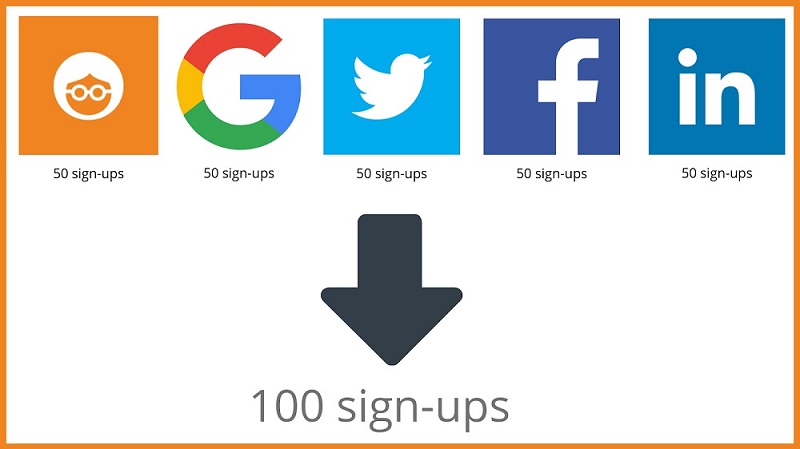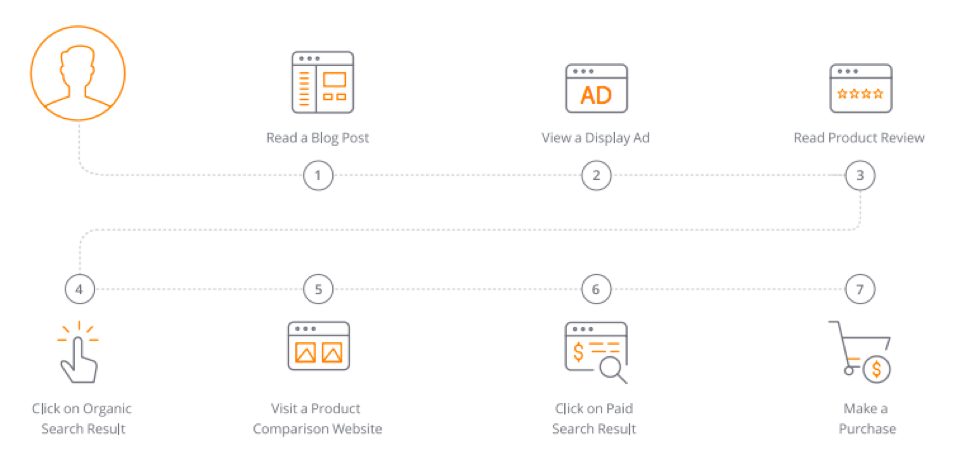How to Choose the Right Marketing Attribution Model for Your Content

Attribution. It’s debatably one of the most important things for marketers to get right, and still one of the most difficult calls to make. So much so, that we even refer to the “attribution war”, as various channels and platforms battle to attribute conversions. Why does the attribution war have such high stakes? Choosing a suitable attribution model for your digital content can dramatically change the credit you’re giving each channel and, in turn, the investment in media budget and resources you’re willing to dedicate. And that’s serious business.

Attribution War: When every platform wants to attribute the conversion
The digital touchpoints that the average customer experiences during their journey in the marketing funnel are growing all the time. From a blog post to a product review, social media post, video, ebook, app notification and more, the digital assets available today, and the ways customers can find them, are incredibly diverse. Take for example the customer journey illustrated in the diagram below. Although it seems linear, it is actually quite complex – and in any case, it doesn’t really reflect the actual customer journey. Most customers today follow a much more complicated and unpredictable path in their journeys with businesses and brands online.

So how can we determine the best model for your business? Before we dive in, here’s a quick overview of the leading attribution models used today:
Types of Attribution Models
First Click:
A first click attribution model gives 100% of the credit to the first touchpoint that brought the conversion.

The bottom line:
- First click attribution is easy to implement but it ignores everything that happened after the first click, such as blog posts read, web pages visited, or social media engagement.
Last Click:
This is the most commonly used attribution model, giving 100% of the credit to the last touchpoint before the conversion.

The bottom line:
- Last click is the easiest attribution model to implement, but it ignores the previous touchpoints encountered by the customer, which could have impacted the sale.
Linear:
The linear attribution model gives equal credit to every touchpoint in the conversion path.

The bottom line:
- Linear attribution is more complex and requires advanced campaign setup. On the upside, it takes all customer touchpoints into account, giving a more complete picture of the interactions that led to the conversion.
Position Based:
In the position-based attribution model, all touchpoints receive credit for the conversion, however, the first and last touchpoints receive more credit than the touchpoints in between.

The bottom line:
- The position-based model is complex and requires advanced campaign setup and monitoring. However, it takes into account all the touchpoints to conversion, considering the impact of each on the conversion path.
Attribution at Outbrain: Our Experience
After analyzing our customers’ behavior, we saw that the average journey among our top spenders included 5.1 touchpoints before conversion (defined as signing up to Outbrain). Over a dozen top customers had no less than 11 touchpoints before sign up, and one customer even got to 82 touchpoints! Up till then, we had been using a last click attribution model, but our analysis showed us that the customer journey was far too complex and this was not the right model for our business.
Moving from last click to a position-based attribution model showed us the value of many of our blog posts and video campaigns across different distribution channels, including Outbrain’s own network, Facebook and YouTube. It also highlighted the first touchpoint experienced by our customers, something we could not have known using the last click attribution model. This gave us the confidence to increase our investments in the channels that generated the first points of contact in the customer journey. By shifting our budget allocation in response to these findings, we eventually achieved conversions at a lower cost-per-acquisition (CPA).
Effective attribution reporting often depends on having access to the right content marketing tools for your needs. At Outbrain, we got great results with Trendemon, who provided us with in-depth and actionable data from multiple touchpoints. This gave us the bigger picture we needed to choose the best attribution model, and to get a better ROI from our conversion funnel.
Choosing the Best Attribution Model
So, what’s the best attribution model for your business? It depends mainly on one thing: your data.
Attribution models are complex and data-heavy – and once set, they are not easy to change. This is partly due to the fact that there are so many different staff and stakeholders involved, including growth marketing teams, marketing technology teams, developers, and even business intelligence departments.
Having said that, it’s totally worth putting in the work. When you choose an attribution model, you are in fact setting the way you view your ROI and the way you make decisions about how to improve it. Here are some of the factors to consider when choosing an attribution model:
- Your customer journey: Every company has different marketing strategies, assets and funnels, so their customer journeys will differ too. It’s really important to map out your entire customer journey, so you can have a solid picture of all the possible touchpoints that may be contributing to your conversions.
- Length of the sales cycle: For companies that have a long sale cycle running across multiple channels, such as B2B companies, a position-based or linear model is likely the best choice. For companies who have a super-short sales cycle, like B2C or e-commerce companies, a one-touch model, like first or last click, could be sufficient.
- Custom attribution models: For more advanced performance marketers, you may want to consider creating custom attribution models in Google Analytics, based on your activities and goals. This way, you can get even more accurate insights about the performance of your content throughout the customer journey.
When you invest the time and resources to choose the right marketing attribution model, you can significantly boost the performance of your conversion funnel and achieve much better ROI. At Outbrain, we’ve seen it happen. I invite you to challenge your current attribution model — the results may surprise you!













